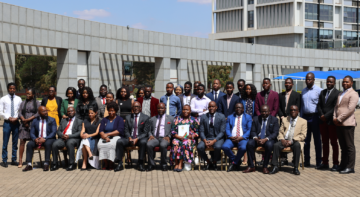News

AFIDEP’s evidence-driven advocacy efforts have seen Kenya revise its TB guidelines to include provisions on post-TB lung disease.
This development followed a series of engagement meetings that culminated to the first Post TB lung disease (PTLD) stakeholders’ forum on 3 February 2020 to raise awareness and deliberate on action to address PTLD. The stakeholder interface was hosted by AFIDEP and the Division of National Tuberculosis, Leprosy and Lung Disease Program in Kenya as part of the four-year NIHR-funded International Multidisciplinary Programme to Address Lung Health and TB in Africa (IMPALA).
According to Dr Boru Okutu, Program Officer at the Division of National TB, leprosy and lung disease program in Kenya, evidence shows that over 60% of TB patients have symptoms after completion of TB treatment, but there is no sufficient evidence and data to support action. “AFIDEP provided technical assistance to the development of the PTLD guidelines,” says Dr Okutu. “There is also need to mobilize funding to generate data and strengthen PTLD services in Kenya to improve the quality of life after TB.”
Brenda Mungai, a PhD student in Global Health, Liverpool School of Tropical Medicine who is leading this work at AFIDEP explains that Post-TB lung disease is common, varying in severity and impact on the quality of life. “However, there is a lot we do not know about this disease,” she says.
“It is great to see that following our engagements, Kenya is prioritizing post-TB lung disease in policy, which is key to unlock funding and programme action,” says Dr Eliya Zulu, Executive Director, AFIDEP. “This will also activate generation of evidence to inform action to address this growing public health concern.”
Moreover, evidence and action on PTLD could inform efforts to understand and treat what is being referred to as long COVID. These are long-term respiratory complications that have been reported to persist in some cases even after COVID-19 recovery.
Related Posts




